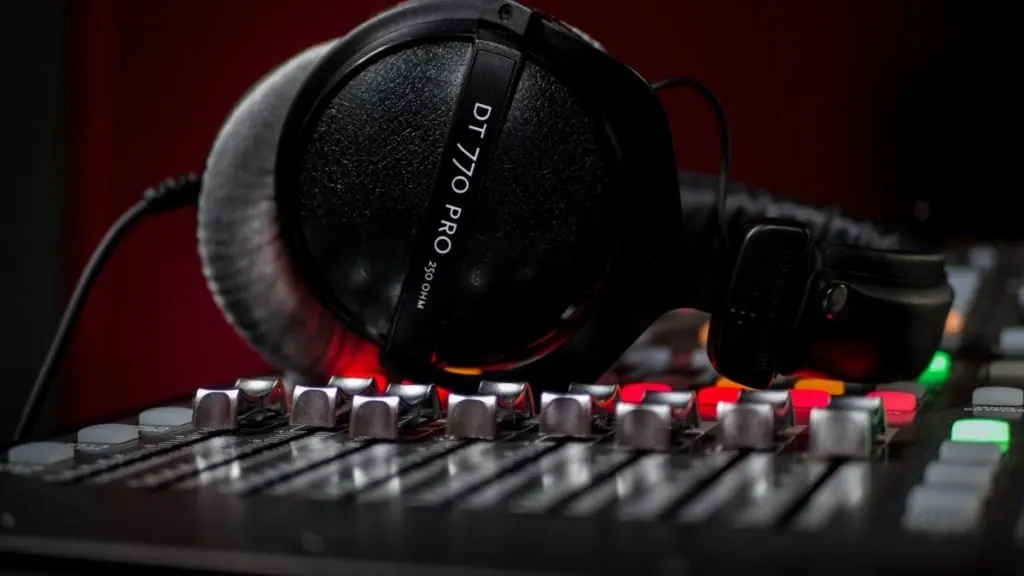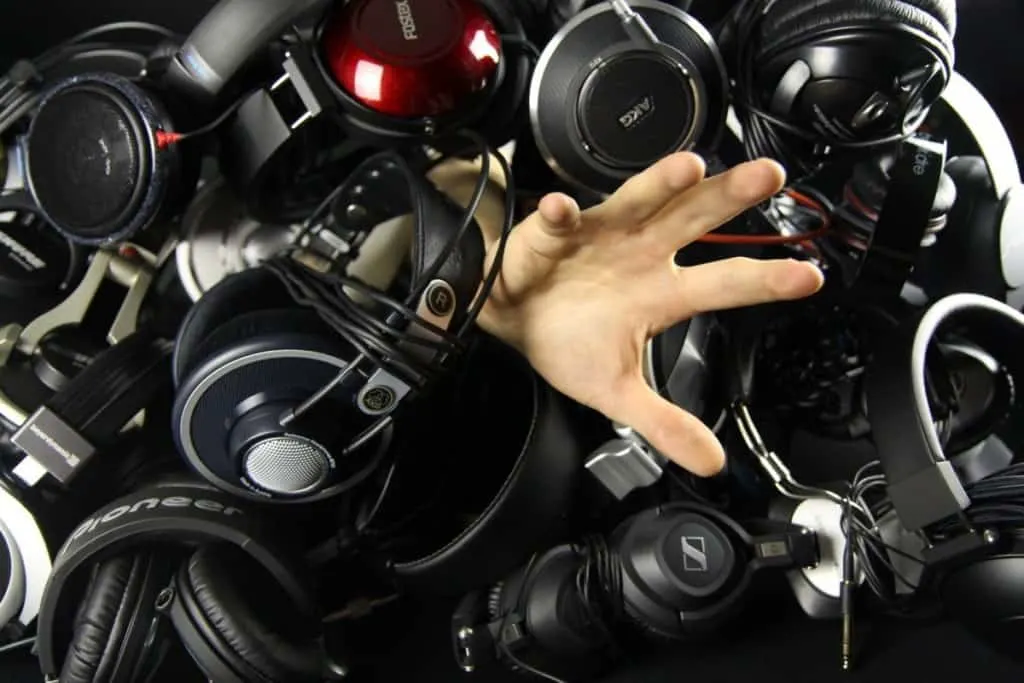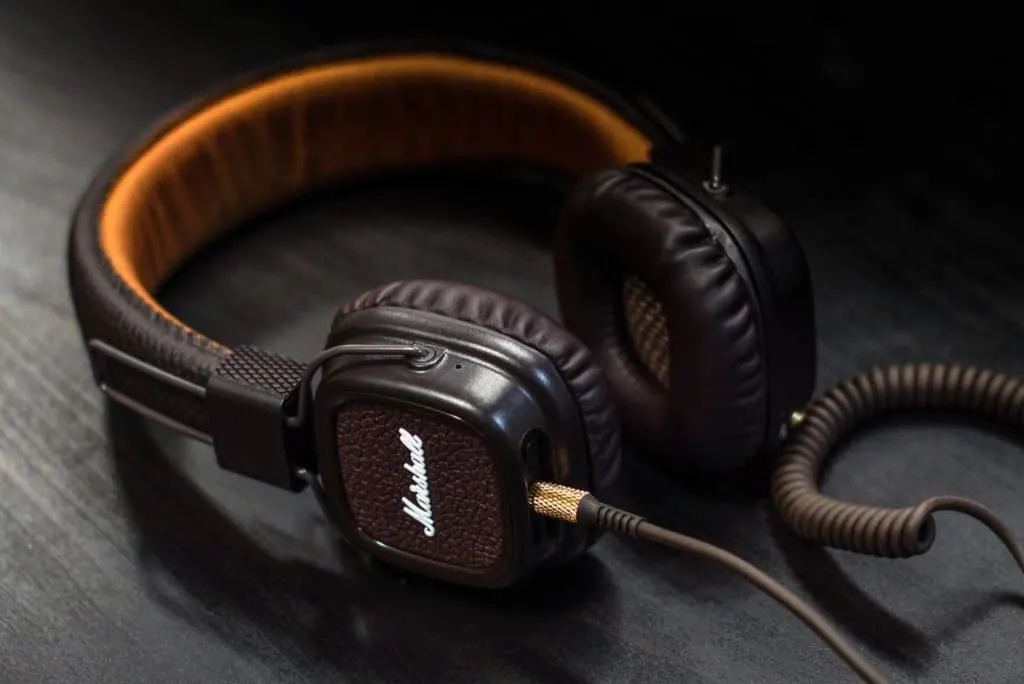Calibrated studio headphones are the closest we’ll ever get to hearing completely flat frequencies without spending a million dollars on isolation, architects, and other pricey professionals.
I have a story to tell you about how my trusty headphones became my only sound source for an entire year. I learned so much on the road with them that I have a ton to tell you about their calibrated, and uncalibrated performance.
So, what are calibrated studio headphones?
Calibrated studio headphones are studio-grade headphones connected to a system that runs through a plugin compensating the boosts and bumps of the headphones’ natural frequency response. By evening out the nuances on the frequency response, you’ll get the closest possible to a completely flat sound for your mixing.
The short answer wasn’t enough for me either and I’m dying to tell you the story about a trip that changed my life and how calibrated studio headphones solved many of my problems on the road. Let’s do this!

There’s A Ghost In The Machine
Has it ever happened to you that you spend hours working on a mix and can’t wait to share it with your friends, but it sounds different (and bad) when you do?
My girlfriend and I usually make and record cover versions of songs we love. She is a great singer and I’m a multi-instrumentalist so things work out great. One night, her dad came along for some pizza. We were very excited to show him our song but the moment we hit play on it through a tiny JBL GO Bluetooth speaker, it sounded like a nightmare.
Consistency is what makes the reputation of a good studio and engineer. To be consistent with your mixes, you need to be able to hear the true frequency spectrum, unbiased by your headphones. There is a way to control the coloration that speakers add to the signal, thus, there is a way to stop them from biasing your work.
Here’s how I found out about the company and software that made it happen for me. Let me tell you a story.
The Trip That Changed My life
Not that long ago, I decided to take a year off from mundane responsibilities and go on a long trip.
I wanted to see the world and my online mixing and mastering gig was doing pretty good. I packed my laptop, my trusty pair of DT770 PRO by Beyerdynamic, and my interface, and took off on a plane to Europe. I left my studio at home, putting all my monitors back in their original boxes, and stored them in my parent’s attic.
I was so excited making my way to the plane waving at my family behind me that I can still remember the feeling. I thought a lot was going to happen to me and I wasn’t mistaken one bit.
Check out the DT770 Pro here on Amazon.
Working On The Road
My first gigs were a complete disaster.
I wanted to see Russia so I went to Moscow, did the whole city-tour-and-night-out thing while mixing and mastering from my hostel bed. I was meeting people and having a great time but for the first time in my life, one of my mixes was rejected.
I was disheartened, and listened to it over and over; I couldn’t find the flaw the client was talking about. Did my ears stop working properly? It was a big project and I lost a considerable amount of time and money on it.
I called home and everyone was super supportive with me so I kept on moving.
Latvia And Beyond
By the time I got to Latvia, I’d had four mixes rejected.
They all claimed the same frequency was either too high or too low. I didn’t have my monitors to double-check as I did at home. I was, quite frankly, a little desperate.
Hanging out at a bar one evening in Latvia I met this girl who worked at a company called Sonarworks. They were just starting with this beautiful dream of working on the gap between sound creators and listeners. I went into their headquarters to check out their software on my first rejected mix.
It was like magic: I could now hear the problem the client was talking about. I left them my headphones and they gave me a calibration file to use them with. I just loaded the plugin into ProTools and run it on the main bus.
From then on, I could trust my mixes and didn’t get any rejections but complements.
I came back home one year later and now Sonarworks is a huge company working with millions of people worldwide.
Why You Need Calibrated Headphones AND Speakers?
I get asked this question a lot when I am talking to colleagues and students.
They often tell me “hey, I just spent x amount of money on acoustics and monitors, do I have to calibrate my headphones too?” Well, a chain is only as strong as its weakest link. You might have a state of the art control room at your studio that sounds amazing.
What about bringing some work home on your laptop and do it from the comfort of the kitchen table? There are many tasks when mixing that can be done at home. If you want to have that freedom, you need to calibrate those headphones too.
Check out my article called “are expensive headphones worth it” You can read it here.

The Low Frequencies And Calibrated Headphones
This is, perhaps, the most sensitive section of the frequency spectrum. Nowadays more and more music is created around a killer beat.
A killer beat is, usually, a strong four-on-the-floor kick-drum (or its synthetic equivalent). It has to be big and fat to move your feet. You can work on it a lot in your headphones and then take it somewhere else and it sounds either too big or disappears.
This can be a minor thing when working with friends, but clients expect to receive a killer mix. You can’t explain to them your headphone’s biases. Taking the groove out of their creations is like telling Slash not to bend a note or play a solo.
Mids Make Everything Clear
Let’s say that instead of mixing a big four-to-the-floor production you have a nice country tune with no percussion in it; how can you engage the WOW factor in it?
The answer to most unclear mixes is in the mids.
By mids, I’m talking about everything from 200 Hz to 2000 Hz. This is where the secret of a clean mix is hidden. If you manage to distribute the vocals, guitars, and the upper registers of the bass evenly, you’ll have a definite winner.
Most headphones come from the factory with some bumps and boost around 1000 Hz which can be deceiving. Our ears try to overcompensate the signal and after that, it all goes into a downward spiral of muddiness and unintelligibility. Calibrated headphones can do wonders in that frequency range.
The High End Is Just As Important
Once the beat sounds killer and you can understand all the harmonic instruments, it’s time to work with the high-end. Some of my colleagues and students tend to forget just how important the high end is.
If your mix sounds shrill it won’t satisfy your clients. Moreover, if every time a cymbal or a cowbell comes in, everything gets squashed and/or distorted, the high end might ruin all your work with the lows and the mids.
Some people do what we call the “Abbey Road Reverb Sound” applying low and high pass filters to the reverb.
This avoids high-end shrill and low-end muddiness. But what about instruments with no reverb that need to breathe through that high end? Let’s say a flute, cymbals, and a violin. Getting their high end right is key for them to help the song.
Some headphone manufacturers tend to tame down the high end of their headphones to make them easier on the listener’s ears. With the right calibration file for them, you can dial in the exact amount of high end to sound brilliant but not shrill on every speaker.
Check out my article on how to mix and record without monitors. You can read it here.
Different Audio Systems
Speaking of different speakers, the only option to avoid using calibration on your headphones is to go for different pairs to double-check on your mix.
All of us who have seriously worked in the music business have done this a million times and I strongly suggest you do it still. The only flaw of this approach is that you’ll be going from one biased sound to another biased sound and sometimes you can compensate for something that is not lacking because there is a ghost in the machine, AKA, a bias in your hearing.
I usually have the JBL GO, a pair of AirPods, regular iPhone headphones, and a pair of high-end audiophile cans in my studio. I run my mixes through them when they are finished just to see if they need anything else. I don’t choose one, I run the same song through all, that way I can avoid biases.

Conclusion: Playing In The Big Leagues
All pros in the world do this kind of bias correction for their mixing & mastering. Furthermore, most of the music you hear was mixed and mastered using unbiased tools.
From acoustically treating a room with thousands of dollars to calibrating the system with either Sonarworks or any other system to choosing their speakers and headphones very carefully, it is all an effort in the same direction: getting rid of listening biases.
If you are mixing songs to have fun like my girlfriend and me, it´s fine, but if you want to hit the major leagues, you have to play with major league rules: your mixes need to rock the world from any speaker.
Finally, in my experience, my calibrated headphones give me an extra push of trust.
I now feel free to make drastic changes and take chances knowing that the result is going to be consistent. Calibrating your equipment will help you a lot without investing a massive amount of money. I still have my DT770 PRO and they still feel like an unbiased home to my productions.
Happy (calibrated) mixing!
